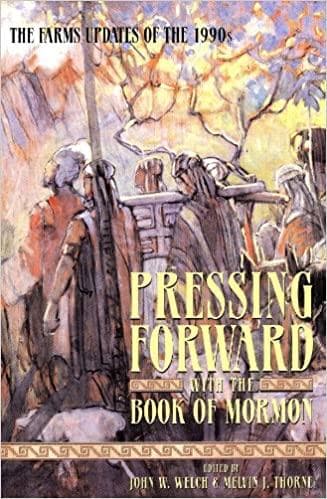Book
69 Chapters

“It is better that one man should perish than that a nation should dwindle and perish in unbelief.” (1 Nephi 4:13)
When constraining Nephi to slay Laban, the Spirit gave the sober justification that “it is better that one man should perish than that a nation should dwindle and perish in unbelief” (1 Nephi 4:13). Alma invoked this same justification when reluctantly subjecting Korihor to divine punishment (see Alma 30:47). This principle runs sharply contrary to modern liberal jurisprudence, but a different view prevailed in certain cases under biblical law.
A pivotal example is found in 2 Samuel 20. King David sought the life of Sheba, a rebel guilty of treason. When Sheba took refuge in the city of Abel, Joab, the leader of David’s army, demanded that Sheba be released to him. The people of Abel beheaded Sheba instead, and Joab retreated. This episode became an important legal precedent justifying the killing of one person in order to preserve an entire group.
Another Old Testament case, preserved more fully in the Jewish oral tradition, involved Jehoiakim, the king of Judah, who rebelled against Nebuchadnezzar. Nebuchadnezzar went to Antioch and demanded that the great Jewish council surrender Jehoiakim or the nation would be destroyed. Jehoiakim protested, “Can ye sacrifice one life for another?” Unmoved, the council replied, “Thus did your ancestors do to Sheba the son of Bichri.”1 Jehoiakim was released to Nebuchadnezzar, who took him to Babylon (see 2 Chronicles 36:6), where presumably he was executed. Because Zedekiah became king less than four months later (see verses 9–10), at the time the Book of Mormon account begins (see 1 Nephi 1:4), Nephi was probably keenly aware of how the “one for many” principle was used to justify Jehoiakim’s death. Clearly, the cases of Laban and Korihor fit within this tradition.
Over the years, the proper balance between the rights of the individual and the needs of the community was debated in Jewish law. On one extreme, the Pharisees held that no individual was ever to be surrendered for the good of the community. On the other extreme, the Sadducees, who often cooperated with the Romans, argued that so long as the authorities named a specific victim, that was all that was necessary. This ruling, known as the Hadrianic Resolve, is found in the Jerusalem Talmud.2
Taking a middle position, most rabbinical scholars have accepted the “one for many” principle, but they limit it to cases like Sheba’s in which (1) the demand was made by a recognized leader, (2) the person requested was already guilty, (3) the person was identified by name, (4) the people in the group were innocent, and (5) the group faced certain destruction if they refused.
Of course, the “one for many” principle was also invoked, ironically, by Caiaphas (a Sadducee) when he argued for Jesus’ death (see John 11:49–50).3 While the audience evidently knew this familiar principle, as Sadducees and Pharisees they were probably divided on its application.
Based on the New Testament alone, the “one for many” principle in the Book of Mormon might have appeared anachronistic. Yet the fuller picture shows that this principle operated much earlier in Israelite culture, notably in Nephi’s own day. This was something that Joseph Smith would have had no way of knowing, and it is a point that few legal historians are aware of even today.
Research by John W. Welch and Heidi Harkness Parker, originally published as a FARMS Update in Insights (June 1998): 2.
1. Genesis Rabbah 94:9, vol. 2 of Midrash Rabbah, ed. and trans. H. Freedman and Maurice Simon (London: Soncino, 1939), 879.
2. See Terumot 8:10, 46b.
3. See Roger David Aus, “The Death of One for All in John 11:45–54 in Light of Judaic Traditions,” in Barabbas and Esther and Other Studies in the Judaic Illumination of Earliest Christianity, South Florida Studies in the History of Judaism, no. 54 (Atlanta: Scholars, 1992), 29–63.
Book
69 Chapters
Items in the BMC Archive are made publicly available for non-commercial, private use. Inclusion within the BMC Archive does not imply endorsement. Items do not represent the official views of The Church of Jesus Christ of Latter-day Saints or of Book of Mormon Central.